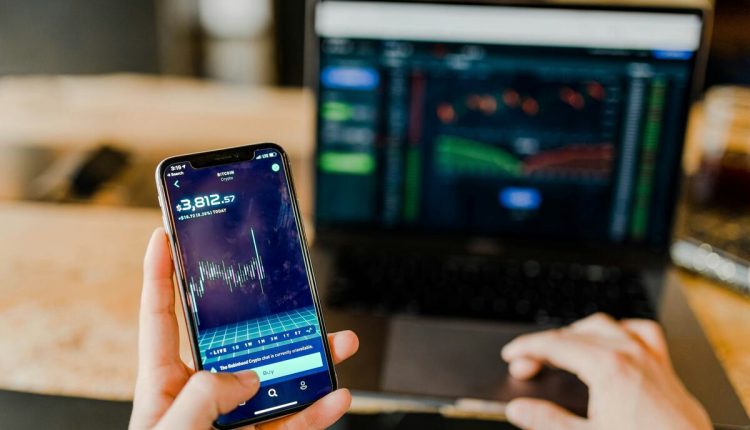Trading robots are computer programs designed to automate the trading process and help traders make consistent, disciplined trading decisions by eliminating emotions like fear and greed. What do you think about forex robots?
However, some robots can be deceptive, employing sophisticated marketing language to claim massive profits. Therefore, it’s crucial that you seek out an established company with evidence of its robot’s success.
Choosing a trading robot
There are various trading robots on the market, each with its own set of advantages and disadvantages. When selecting your trading robot, ensure it fits with your trading goals and strategy—some robots are fully automated, while others require manual input from traders. In addition, monitor its performance regularly to make sure it remains optimized for current market conditions.
Cost should also be an essential consideration when selecting a trading robot, with some being free and others charging one-off or monthly subscription fees. You should also ensure your chosen robot has a proven track record and is reliable.
Many traders turn to trading robots because they provide automation and increase efficiency in their trading process. Before deciding on any specific robot or service provider, however, thorough research must be conducted regarding each’s capabilities as well as compatibility with your broker of choice and risk management strategies in place.
One potential drawback of using a trading robot is its reliance on historical data, which can lead to inconsistent results. Furthermore, adapting to changing market conditions may prove challenging and may lead to costly errors, which can lead to losses. Moreover, robots may be susceptible to hacking attempts, which can reduce security even further than human traders do.
Customizing the robot
Trading robots are software programs that analyze market data and execute trades based on pre-set rules. Used with multiple brokerage platforms, trading robots can identify both short-term and long-term trade opportunities, trend identification, and signal delivery, helping traders improve profits without manual intervention and risk reduction. However, don’t take their use for granted, as success can never be guaranteed.
There is an array of robots on the market, each offering different features and capabilities. Some are free, while others require payment. When choosing your ideal trading robot, it is essential that it fits both your trading style and risk tolerance and is compatible with your broker. To make an informed choice, it’s advisable to research various options available before selecting one to ensure a smooth trading experience and optimal outcomes.
Trading robots can help increase your profit potential by automating the process of finding trade opportunities and executing them automatically. They also give access to advanced trading methods that would otherwise be difficult for human traders to apply. Unfortunately, trading robots come with some drawbacks, such as not performing well in volatile markets or negative trends.
Trading robots are an invaluable asset for traders looking to reduce the time they devote to monitoring and making trade decisions. Trading robots can monitor markets 24/7, taking action on your behalf to make the best trade decisions while eliminating emotional trading – saving both time and money in the process.
Monitoring the performance of the robot
There are various trading robots on the market, each offering different features and costs. Before making a purchase decision, it is essential to research each robot individually. It is also crucial that you monitor its performance. Some robots may exhibit impressive win rates, but these results could simply be achieved through scalping strategies that generate small profits over short time frames. This approach might seem tempting but could soon turn disastrous when large losses wipe out profits altogether.
Collecting and analyzing log file data can help monitor a robot’s performance. Insights allow you to see exactly how much CPU and memory the robot is using; this information is helpful in diagnosing bottlenecks and improving the bot’s overall performance.
Trading robots are invaluable assets to traders, helping to eliminate emotional biases and identify multiple markets for potential trading opportunities. Furthermore, trading robots help ensure continuous liquidity in financial markets, allowing traders to buy or sell assets more efficiently; however, they still have some limitations, such as being unable to recognize external factors that influence prices.
Using a demo account
Demo accounts provide new traders with an ideal way to practice trading without risking real money. With access to virtual stock prices, charts, and platforms that replicate real trading scenarios, novice traders can learn from their mistakes without incurring financial risks associated with trading real money. It should be remembered. However, demo trading does not replace practical experience; traders should invest time reading books, watching videos, and, most importantly, practicing their trading skills with a demo account before moving on to live trades.
Demo accounts can also help seasoned traders transitioning to a new trading platform become acquainted with its features and prevent costly errors. However, conditions on a demo account may differ significantly from those found on an actual live one.
Some companies selling trading robots attempt to woo potential customers by showing impressive win rates on their demo software, typically by employing scalping strategies that aim for small profits from small price fluctuations. Unfortunately, such strategies can be hazardous; just one or two significant losses or multiple smaller ones could wipe out all profits made. A genuine company should provide backtests of their system, but it would be wiser for prospective clients to evaluate both market conditions and a potential robot before making their decision.

